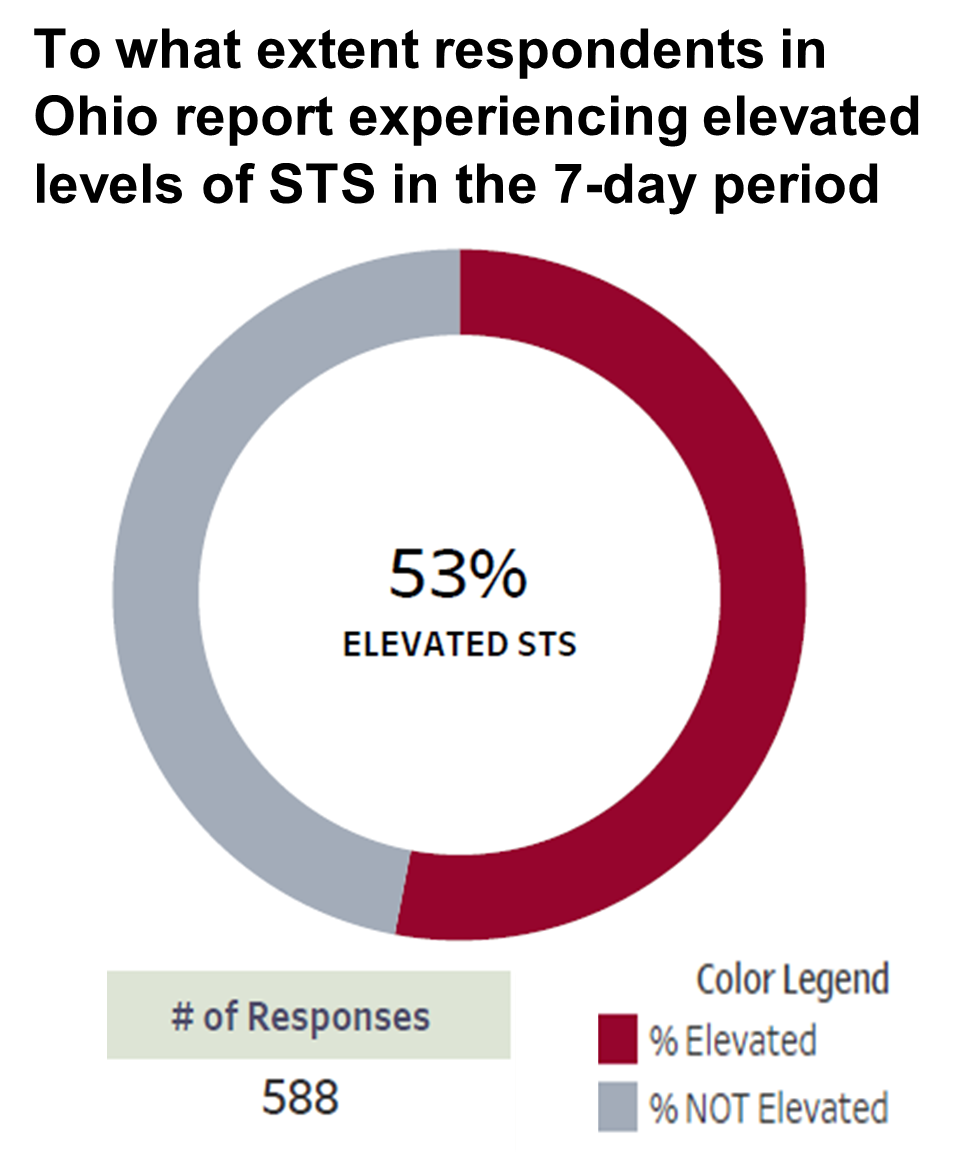Supportive Supervision and Resiliency
What is the intervention and why was it selected?
The Quality Improvement Center for Workforce Development (QIC-WD) conducted a comprehensive needs assessment with nine participating Ohio counties in partnership with the Ohio Department of Job and Family Services (ODJFS). The assessment revealed that organizational culture and climate across counties was above average in rigidity and resistance, and below average in engagement. In addition, over half of staff had recently experienced elevated levels of secondary traumatic stress (STS) symptoms. Supervision was also identified as a challenge at every level of the agencies (i.e., from directors to managers, managers to frontline supervisors, and supervisors to frontline workers). Supervisors indicated that they desired to increase their skills in how to coach, give feedback, and support staff, and there was evidence that frontline workers needed to develop stronger coping skills and learn how to self-regulate their emotions and maintain healthy boundaries.
To best address these identified needs, ODJFS, in collaboration with the QIC-WD, created Coach Ohio, a multi-level supportive supervision intervention that pairs Resilience Alliance (RA) with the Atlantic Coast Child Welfare Implementation Center (ACCWIC) Coaching Model. Coach Ohio was designed to integrate theory and research on supportive supervision in child welfare and other related fields, coaching, and employee engagement, with a promising (but untested) intervention to address STS. The intervention targeted frontline staff, supervisors, and managers within six county agencies. (For further information on how Coach Ohio was selected, see the Needs Assessment Summary and Theory of Change.)
What is the evidence behind this intervention?
Coach Ohio draws upon evidence in several areas: organizational culture and climate, employee engagement, supportive supervision, STS, and organizational trauma theory.
 Organizational Culture & Climate: Many child welfare agencies struggle with similar challenges to those identified in Ohio. Rigid rules and regulations, inflexibility in carrying out duties, resistance to change, and low worker engagement are common challenges in child welfare agencies, yet evidence suggests that agencies with a constructive culture will experience lower turnover (Glisson, Green & Williams, 2012). Agencies that improve their levels of resistance, rigidity and employee engagement will experience greater success in retention.
Organizational Culture & Climate: Many child welfare agencies struggle with similar challenges to those identified in Ohio. Rigid rules and regulations, inflexibility in carrying out duties, resistance to change, and low worker engagement are common challenges in child welfare agencies, yet evidence suggests that agencies with a constructive culture will experience lower turnover (Glisson, Green & Williams, 2012). Agencies that improve their levels of resistance, rigidity and employee engagement will experience greater success in retention.- Employee Engagement: High engagement leads employees to be more enthusiastic, energetic, dedicated, satisfied with their jobs, and committed to the organization (Christian, Garza, & Slaughter, 2011; Macey & Schneider, 2008). Leaders and managers influence engagement through several means, including through the leader’s behavior. In addition, the quality of leader-member relationships (Graen & Scandura, 1987) can also positively affect employees’ positive emotions and attitudes.
- Supervision: Supervisors are seen as key to building a strong, resilient child welfare workforce (Kadushin and Harkness, 2002). Supportive supervision is focused on helping staff decrease stress that can negatively impact performance, increase motivation, and intensify worker commitment. Managing stress, offering praise, reassurance and encouragement, and listening attentively are all part of this important supervisory role. These “relations-oriented” supervisory behaviors (Yukl, 2012) correlate with perceptions of the quality of supervisor-subordinate relationship (O’Donnell et al., 2012). The quality of this relationship in turn impacts employee job satisfaction, organizational commitment, and retention.
 STS: Child welfare staff are particularly susceptible to STS and STS can mimic the symptoms of Post-Traumatic Stress Disorder (Bride, 2007) including nightmares, sleep disruption, avoidance, and irritability. STS in child welfare has been linked to low rates of job satisfaction and staff retention (Barbee et al., 2018). The Resilience Alliance intervention was developed to mitigate the impact of secondary traumatic stress in child welfare settings, by providing staff with the tools to identify, understand, and address the ways the work affects them personally and professionally.
STS: Child welfare staff are particularly susceptible to STS and STS can mimic the symptoms of Post-Traumatic Stress Disorder (Bride, 2007) including nightmares, sleep disruption, avoidance, and irritability. STS in child welfare has been linked to low rates of job satisfaction and staff retention (Barbee et al., 2018). The Resilience Alliance intervention was developed to mitigate the impact of secondary traumatic stress in child welfare settings, by providing staff with the tools to identify, understand, and address the ways the work affects them personally and professionally. - Organizational Trauma Theory: The evidence for designing Coach Ohio as a multi-level intervention stems from the parallel process concept embedded in organizational trauma theory (Bloom, 2010), which focuses on the impact of organizational culture and climate on practice with clients in social services. The concept of parallel process is that how top-level administrators treat middle managers affects those middle managers who then pass on the same behaviors down the line. When the treatment is positive (e.g., managers are treated with respect, given the support they need to perform well) then managers will behave positively towards their own staff (frontline supervisors), who will in turn behave positively towards their staff (frontline workers), who will in turn behave positively towards the families and children they serve. When the treatment is negative, it too, is passed down. The implication of the parallel process is that to ensure that staff engage families positively, it is imperative that leaders, managers, and supervisors all align their behaviors with those desired in the caseworker-family relationship.
What is the research gap the QIC-WD is addressing?
While it is commonly accepted that supportive supervision is critical in child welfare agencies, there is very little research evidence of the effectiveness of specific child welfare supervision behaviors (Carpenter, Webb, & Bostock, 2013). There is evidence that employee’s perceptions of supervisory support are associated with job satisfaction and job retention. But there are very few actual studies of supervision interventions in child welfare, and no randomized trials or quasi-experimental studies demonstrating the impact of supervision interventions in child welfare. Recent studies have called for the development of strategies to build supervisors’ capacities for supportive supervision (Williams, 2018). Altogether, the literature points to the need for further rigorous research evaluating the impact of supportive supervision in child welfare agencies. Further research is also needed on interventions to build employee engagement and test whether doing so will in turn impact job retention. In addition, rigorous research testing the effectiveness of the Resilience Alliance program for reducing STS in child welfare agencies is needed. The evaluation of the Coach Ohio intervention will build evidence in all of these areas.